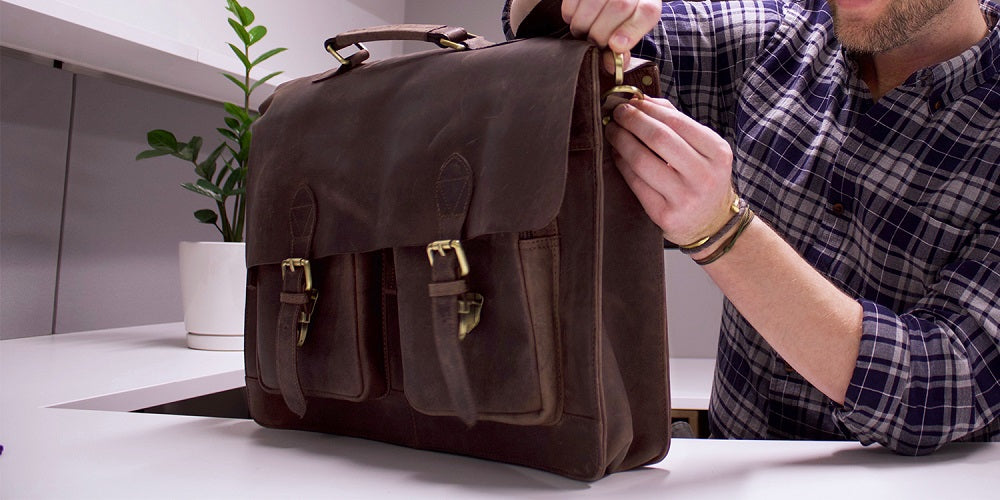
Leather is a gem of a fabric. From leather bags to leather accessories, leather seems to make everything better, right?
But what is faux leather, really? What does it take to own real leather goods that you can rock however you want? How should one choose and buy faux leather items?
Here’s a comprehensive guide that contains all the information you need to know about faux leather, full-grain, and top grain leather and their place in the leather world.
So, without any further ado, let’s get right to it.
What is Faux Leather?
Faux leather, also known as synthetic leather, is a manufactured, fake alternative to natural leather.
What is Faux Leather Made From?
Faux leather is a petroleum-based product. This means unlike real leather; synthetic leather does not decompose and is harmful to the environment.
The process of manufacturing faux leather is reasonably simple and can be summarized in three brief steps:
- Acquire a base material
- Use plastic to bind the pieces
- Use PU or PVC to base fabrics
As you can see, faux leather is not really leather, but a bunch of plastics and chemicals combined together to mimic leather.
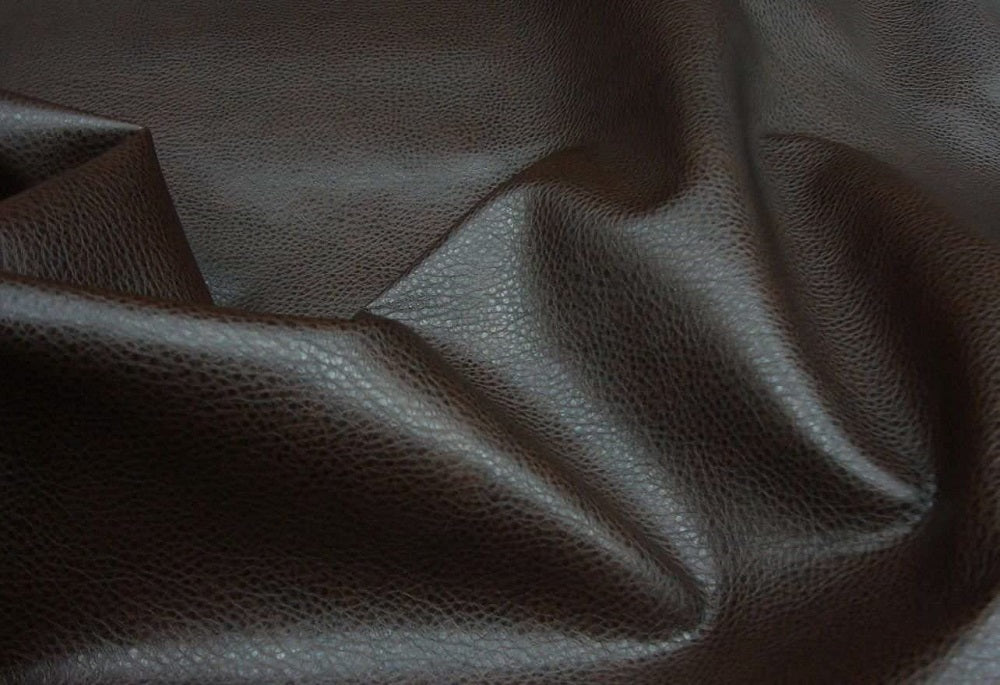
How is Faux Leather Used?
If faux leather is an alternative to real leather, it must have the same uses. Quite true!
However, despite being similar, synthetic leather’s uses are limited. If this isn’t a hint that real leather is better – what is, really?
Let us offer you a glimpse of everywhere you can expect to find faux leather.
- Upholstery: Coffee tables, sofas, and seats commonly feature faux leather. However, they are known to appear cheap and do not last, especially when one has pets at home.
- Apparel: Jackets, bags, leather pants, and occasional footwear, such as leather boots. But these are not popular because of frequent cracks and poor quality.
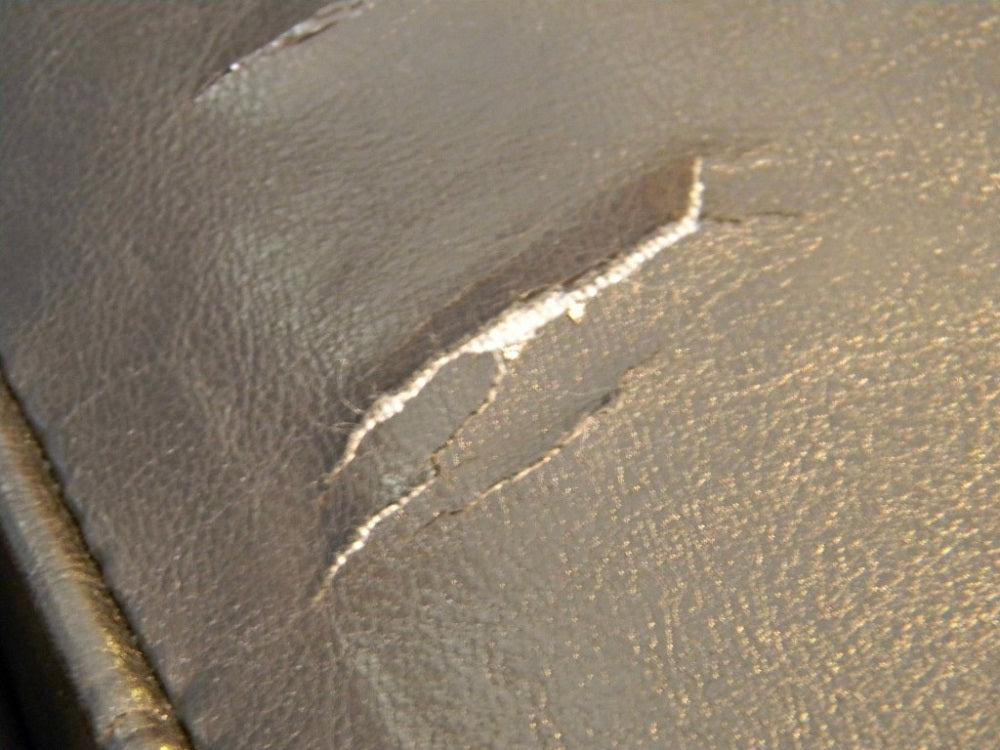
Cost of Faux Leather
At scale, the price of faux leather is gauged in price per yard. Typically, leather’s price is determined by price per pound. Still, since faux leather does not require weaving, price per yard is better to determine cost.
Faux leather, ultimately, can cost you anywhere between $10-$25 per yard. But these prices are mainly for PU and PVC-based leather.
Despite the low cost of PVC-based leather or high prices of vegetable oil-based leather, faux leather’s return on cash-spent is quite low. In the long run, as you buy more fake leather (since it does not last), your base cost increases.
Different Types of Faux Leather
As faux leather is a knock-off to real leather, there are more just like it!
Some of these include:
- PU leather: which is notorious for being less comfortable than other types.
- PVC leather: if you think plastic, you couldn’t be more correct! PVC leather is fake leather that is produced in large quantities and contributes towards an equally large amount of plastic pollution.
- Vegetable oil leather: it is an organically sourced form of leather that is durable and sustainable but expensive.
Is Faux Leather Real Leather?
Faux leather is not real leather. It’s a synthetic copy that is cheaper, but will wear out very quickly.
If you wondered if faux leather is real leather before this article, by now, it must be clear that faux leather is not real leather.
However, to what extent is it not real? What makes fake leather artificial?
Let’s deep dive into characteristics that make natural leather real and synthetic leather artificial.
· Source of Leather
Real leather is obtained from cow, buffalo, goat and even oxen hides. You name a cattle, and its hide can be used to create the most beautiful sheets of leather that would be eventually used to produce leather products.
On the other hand, faux leather is a product of plastic, wax, and dye – everything fashion enthusiasts and smart shoppers warn about.
· Texture
Faux leather has a uniform or smooth texture.
On the other hand, real leather’s texture is not uniform as it is made from a real cow’s hide that has a unique texture with distinctive, uneven marks. This gives more character to the leather product. In a nutshell, each mark on real leather tells a story that only true leather enthusiasts can understand.
Additionally, real leather develops more character over time and has pores, while faux leather does not have pores. Pores are also a sign of quality as they help absorb excessive sweat and oil.
· Color
Fake leather comes in multiple colors. Each color has an even tone – unlike real leather which has the same color as the animal, in varying degrees and tones of colors.
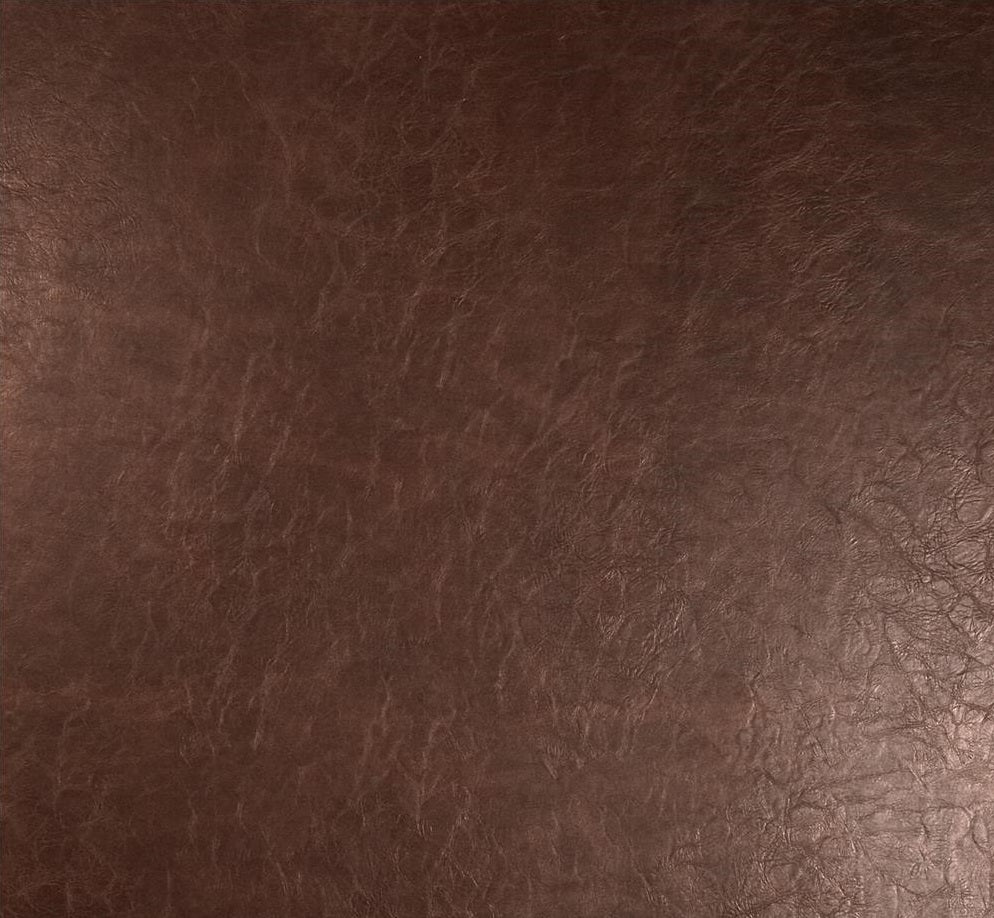
How to Clean Faux Leather?
Faux leather is pretty easy to clean. But since it is not as durable as regular leather, special care is required.
Let us understand how to clean leather.
If you drip ranch sauce on your glossy faux leather accessory, reach for a non-abrasive, clean cloth and wipe gently in circular motions. If the smudge is stubborn, the a damp cloth can be sprayed with a spray bottle for a squeaky-clean shine.
If the stain becomes relentless, you’d have to pull up your sleeves and bring in some warm water, baking soda and dish soap. Rubbing alcohol is another option for very difficult stains.
Use a few drops of washing liquid mixed with water and gingerly rub the stain away. Afterward, use a fiber cloth to wipe the faux leather and clean any extra solution or residue, and let it air dry.
Pros of Faux Leather
Faux leather has become a multi-billion dollar industry. So, it stands to reason there must be some good things about faux leather.
From faux leather’s durability to its luxurious feel, let’s break down what benefits synthetic leather offers or doesn’t offer!
· Cost-Effective
Unlike real leather, which is rare and pricey, faux leather is significantly cheaper. Thus, if you are looking for an affordable option, faux leather might be a good start.
· Versatile
Faux leather is tremendously versatile, which means you can have a leather jacket in any color, and finish, whether gloss or matte. Faux leather might not be real, but it is versatile!
· Stain Resistant
Given the use of PVC in its manufacturing, faux leather repels stains well, and it’s resistant to cracks too.

Cons of Faux Leather
While there are quite some pros of faux leather, it is essential to consider the cons before we start to believe it is the ideal alternative to natural leather.
· Breathability
Faux leather is uncomfortable and does not suit people’s skins. It is because of its lack of breathability.
· Gloss
Even though faux leather offers both a gloss shine and a matte finish, both finishes are not durable. No matter how good the quality of faux leather is, the shine and gloss always fade with time.
· Fabric Quality
The toughest faux leather is also susceptible to the slightest punctures and tears.
· Hypo-allergenic
Many materials cause an allergic reaction. Suppose you have ever had a rash or an allergy after using a particular type of fabric. In that case, it means the fabric was non-hypoallergenic.
Faux leather is also non-hypoallergenic. This means wearing faux leather can cause a skin rash or undesirable allergic reaction.
· Longevity
Faux leather is only a good option if you want to use a leather accessory or a bag for a few weeks or months. Since faux leather rarely lasts long at all.
· “Fake Leather”
Faux leather is easy to detect. Thus, no matter how good one might think faux leather is, an observer can easily pick fake leather.
If you wouldn’t want to be called out for knock-off brands, there’s no reason to be called out for faux leather either.
Faux Leather vs. Real Leather – Ultimate Showdown
We can sense that you feel confused. If faux leather has a fair share of cons, it has some benefits, too, right? Furthermore, faux leather is cheap too.
Ultimately, why shouldn’t a person go with faux leather and it a thing for history books only?
To help you become an empowered consumer who understands leather, let’s get down to real business – an all-out battle between faux leather and real leather – and find out which one is best for you.
· Real Leather’s Strength
Real leather is natural and organic. It contains a solid intricate collagen fiber structure that offers real strength for generations.
Faux leather, alternatively, is not as strong nor durable. Getting even a couple of years out of your faux leather handbag, jacket, or upholstery would not be anything less than a miracle.
· Real Leather’s Abrasion Resistance
Faux leather can resist some abrasion, but it is weak against punctures, tears, and wrinkles.
Comparatively, real leather is a fortress against any abrasions, punctures, and tears. Real leather never has to worry about that as far as wrinkles are concerned.
Instead, real leather becomes more robust and more beautiful over time as it develops a splendid patina.
· Long Term Value of Real Leather
Although faux leather’s low price is enticing, it is vital to consider how many times you would have to purchase faux leather since it has poor longevity and needs to be replaced almost every year.
On the flip side, despite a relatively more significant price tag, real leather offers more excellent value for money. Many real leather aficionados share their leather items last longer than some relatives!
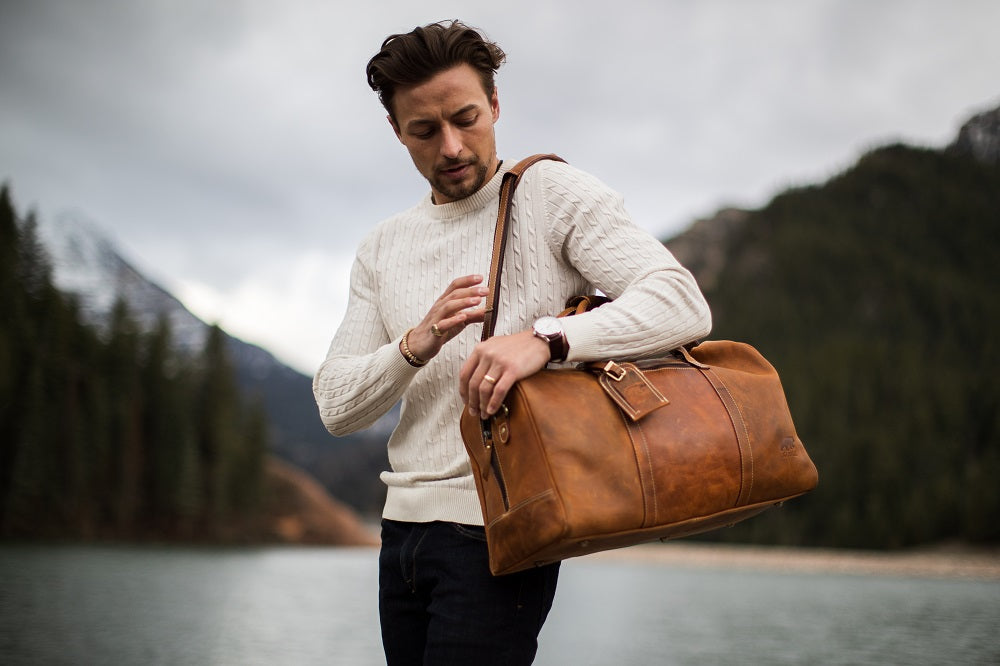
What Makes Real Leather Unique
Faux leather is a mass-produced item. The faux leather product that you have has thousands of copies. But real leather is unique.
Every hide obtained from leather is unique in color, texture, spots, and even veins. Therefore, the real leather good that you own will always be the only one in the world.
Types of Real Leather
Fake leather gives you few choices.
Real leather, on the other hand, offers countless options!
Different animals offer different leather. Moreover, there are many processes that go behind producing natural leather. Each different process results in a different kind of leather.
Two of the most used leather types that we recommend are:
- Full-grain leather, and
- Top-grain leather.
The two leather types are ideal choices for different accessories, especially handbags and wallets.
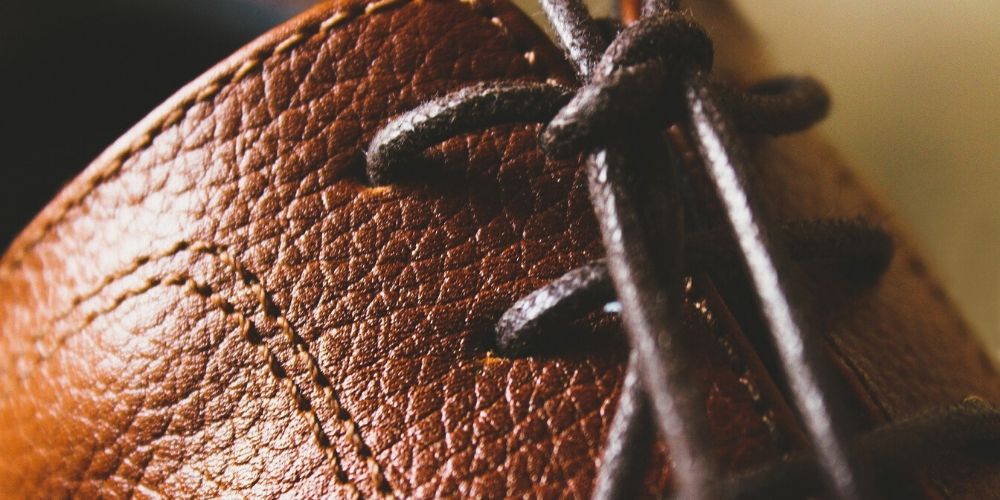
Full-Grain and Top Grain Leather for Bags
Full-grain and top grain leather are highly recommended by The Real Leather Company for bags because full grain and top grain leather are most durable.
Hair is removed from the hide to create a bag out of full-grain leather. The resulting leather is immediately sent for tanning. This ensures full-grain leather retains all its properties and offers non-hypoallergenic features and durability.
Similarly, top-grain leather can endure the toughest of challenges. The top grain is ideal for a pristine look more than its durability. Since the top layer is sanded or buffed, leather bags made from top-grain look sophisticated and feel luxurious.
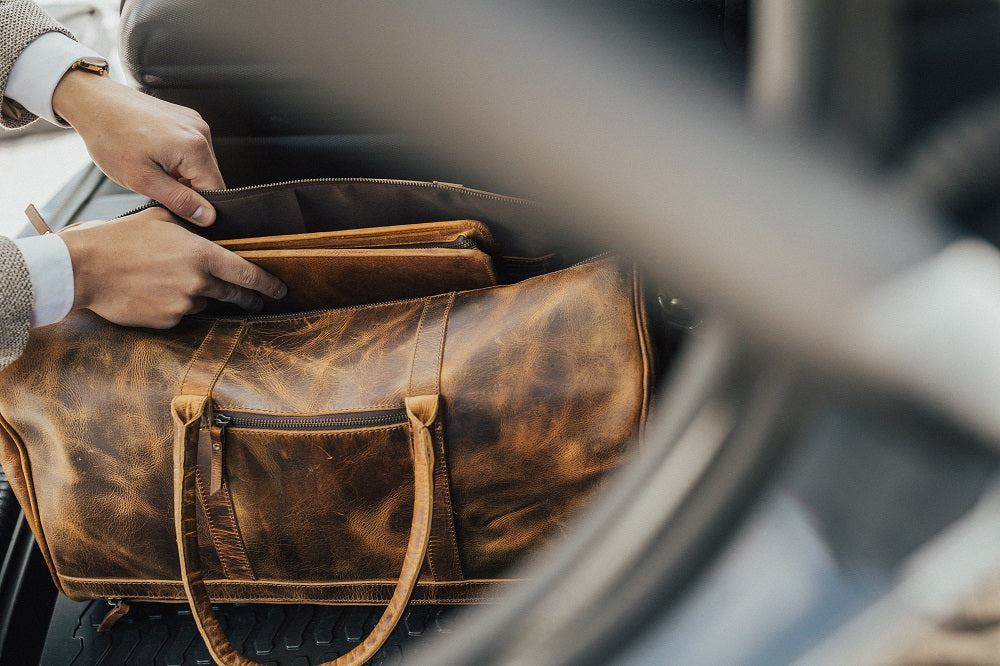
Our Favorite Real Leather Goods
This year is all about natural and organic items, such as real leather goods. Let us share our favorite real leather goods with you to keep your leather closet updated and vogue.
-
The Bifold
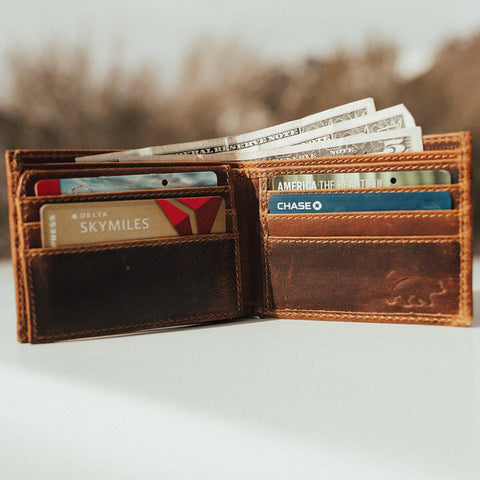
A classic top grain leather wallet, the bifold is a must-have item. Not only is it functional and durable, but it is also a style statement.
Gender-neutral and remarkable, the bifold is a luxury you can fit in your pocket – or even carry to cherish the true feel of genuine leather.
Shop The Bifold
-
The Sitka

The Sitka will be your ultimate accessory choice for your next business meeting or a casual day out.
With a classic rugged finish and a legacy in its straps, the Sitka leather bag is your first step into the world of rugged and suave glamour.
Shop The Sitka
-
The Everyday
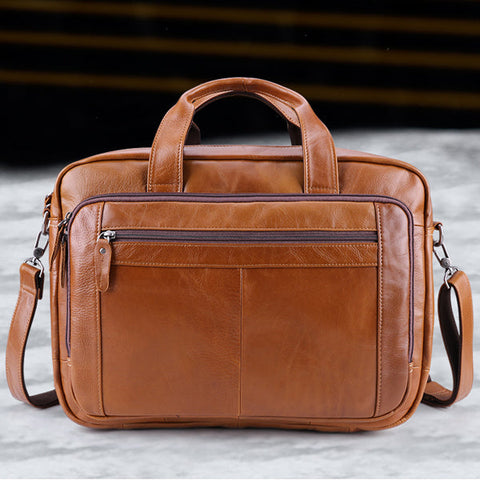
For a more mature look and a sign of wisdom that speaks volumes about your experience, The Everyday leather bag is crafted for a man in action – both at home or at the office.
Shop The Everyday
Takeaway
Now that you know what natural leather is and what it isn’t, you are ready to transition to the next phase: owning a piece of leather especially crafted for you!
Wondering how you can do that?
By shopping your heart out at The Real Leather Company – a one-stop shop that offers premium-quality leather accessories that add flair to your personality, elevating your life.
Junyuan Bags | Professional Bag Manufacturer
Ten articles before and after
What is Vegan Leather? The Complete 2022 Guide – Junyuan Bags
Complete Guide to Leather Conditioner: How to Clean Leather – Junyuan Bags
Top 7 Leather Travel Bags for Men in 2022 – Junyuan Bags
The Best 4 Leather Weekender Bags for Men in 2022 – Junyuan Bags
What is PU Leather? The Complete 2022 Guide – Junyuan Bags
The 6 Best Leather Holdalls for Men in 2022 – Junyuan Bags




 Mobile/What's App/Wechat
Mobile/What's App/Wechat E-Mail
E-Mail ADD
ADD




